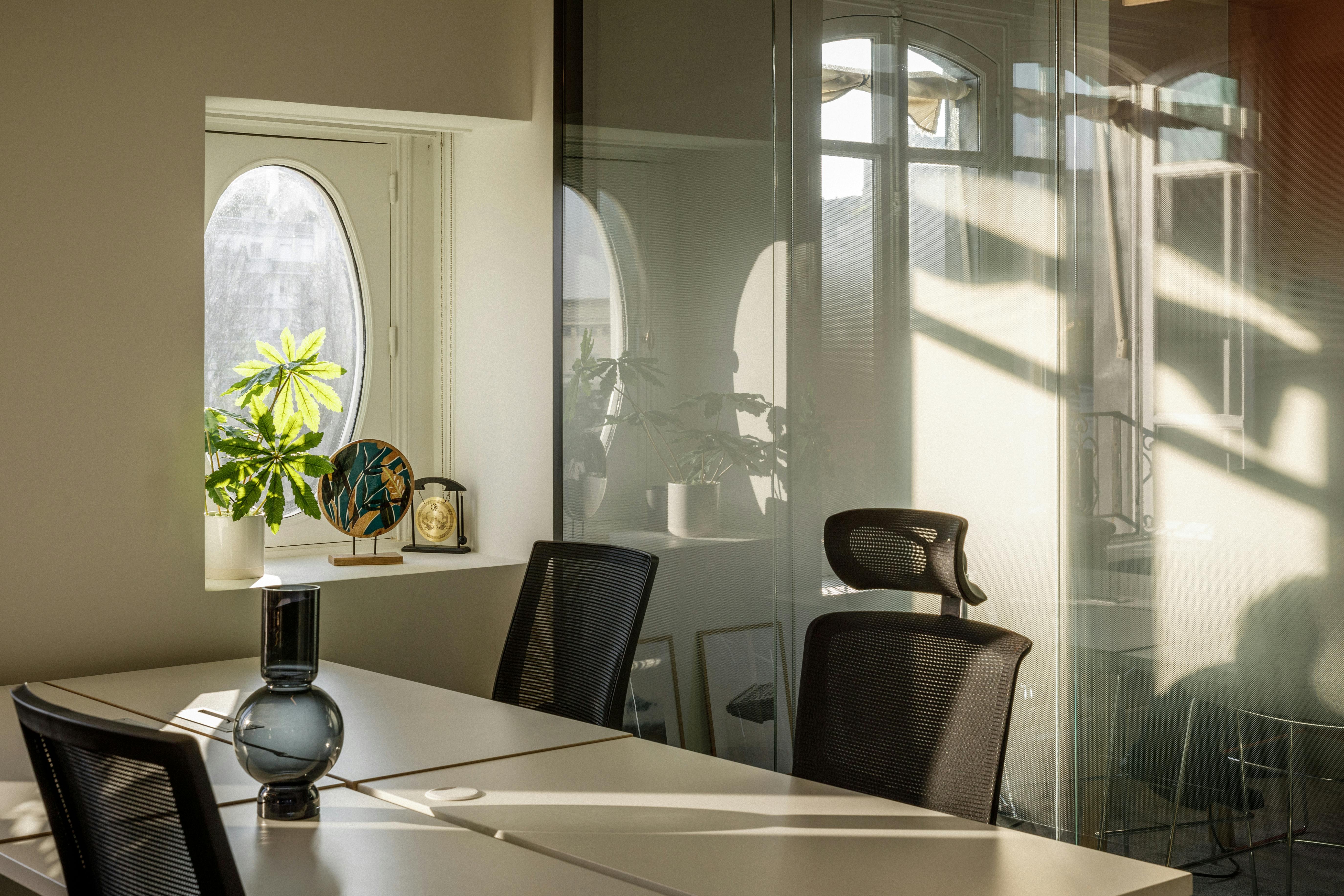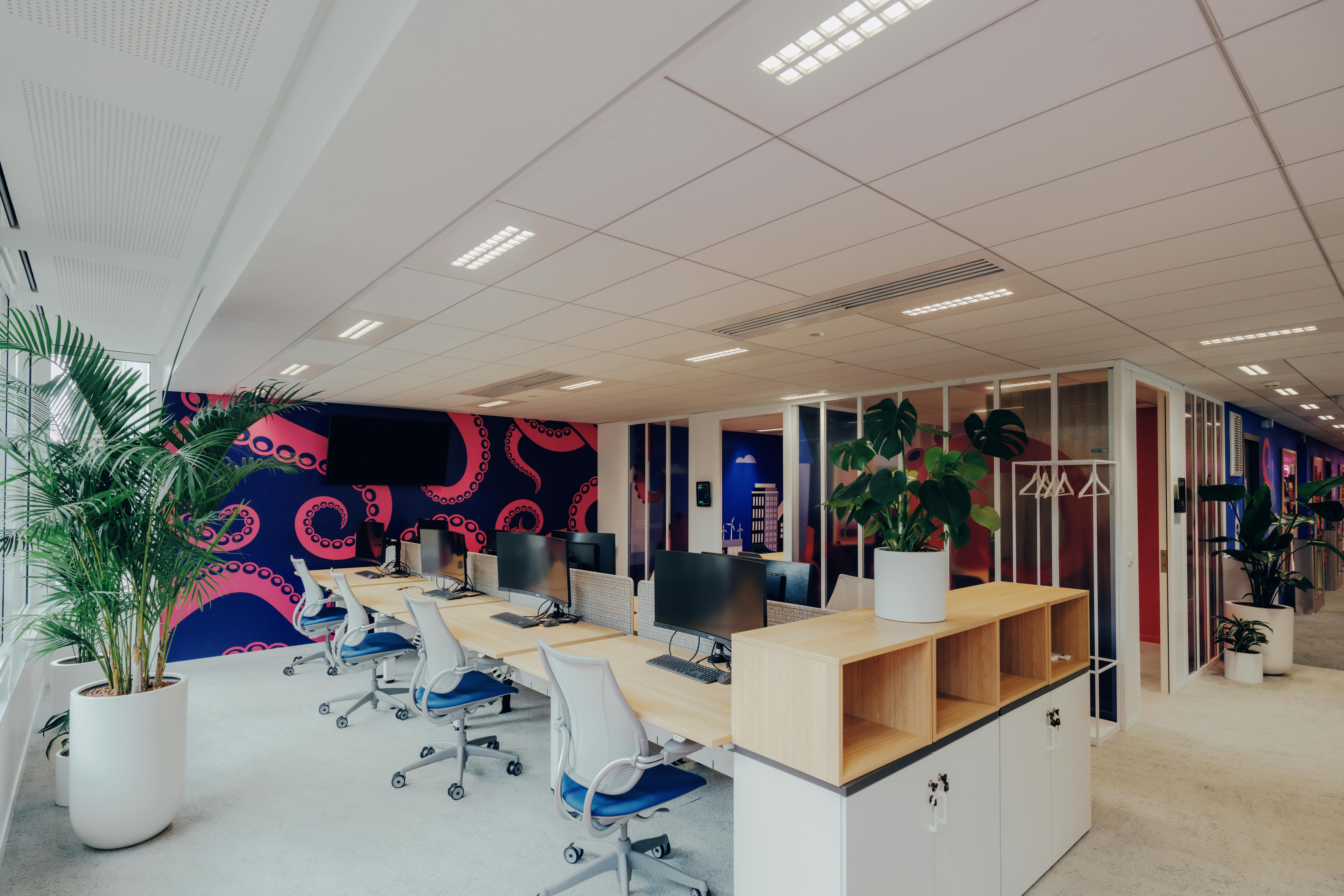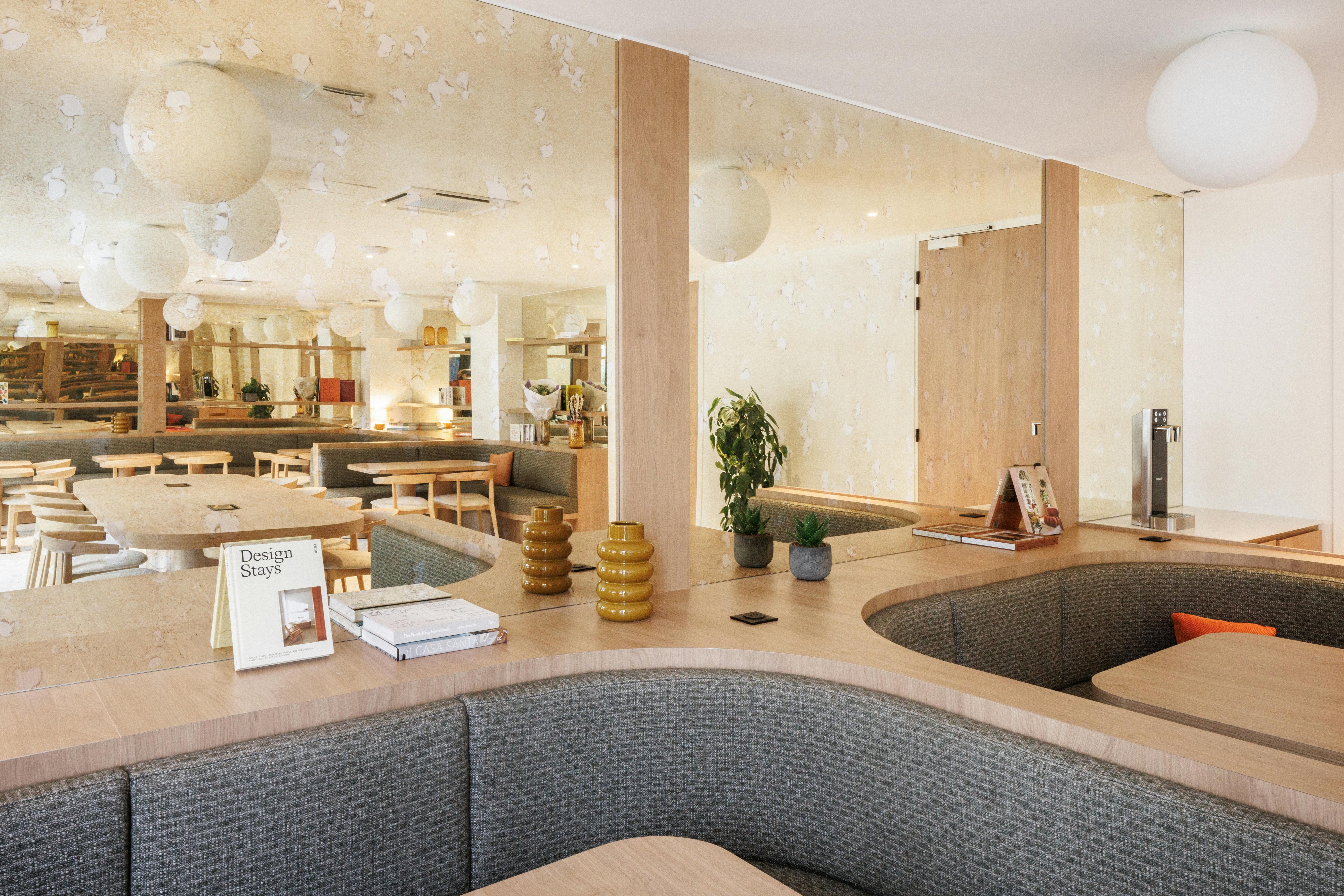

Office design: how to optimize space to improve productivity?
Today, companies are no longer simply looking for offices to set up in, they want spaces designed to perform. Deskeo, leader in office rental and fit-out, supports companies in this quest for efficiency and well-being. Why this article? Because we know that workspace design is a powerful lever for boosting productivity, encouraging collaboration and attracting talent.
So how can you transform your offices into a real performance driver? Here's our advice, based on our expertise in the field and our achievements with companies in all sectors.
The workspace: A catalyst for productivity
According to a study by the Leesman Institute, 85% of employees believe their work environment directly impacts their productivity. Yet, nearly 40% feel their current office doesn’t meet their needs. The stakes are high: poorly designed spaces can hinder focus, increase stress, and reduce team engagement.
Understanding team needs
Every company is unique, and team needs vary depending on activities and work styles. Conducting an audit of employees’ expectations and habits is essential to creating tailored office designs. This involves interviews, internal surveys, and observing daily workflows. For instance, a creative team may require open spaces that foster idea sharing and collaboration, complete with inspiring brainstorming zones. Conversely, administrative departments might prefer partitioned areas conducive to concentration and privacy.
Measuring the impact of space on performance
Tools like internal surveys, occupancy sensors, and workflow analyses can provide valuable insights into how workspaces are actually used. Surveys capture employees’ feedback and needs, while sensors monitor real-time usage of different office areas.
These insights might reveal, for example, that certain meeting rooms are underused or that collaborative spaces are overcrowded. By cross-referencing this information, you can adjust office layouts to maximize efficiency—expanding popular areas, rethinking underutilized spaces, or introducing more flexible solutions. This data-driven approach ensures that the workspace continuously evolves to meet the changing needs of your teams.
Flexibility First
The era of rigid open-plan offices is over. Today, agility is key. Incorporating modular spaces allows teams to adapt to varying work rhythms: quiet zones for focused tasks, collaborative areas for brainstorming, and informal spaces for spontaneous interactions.
Modular and Adaptive Spaces
Movable partitions, modular furniture, and multi-purpose rooms enable quick office reconfigurations based on current needs. For example, professional workspaces can be transformed into meeting rooms or individual work zones depending on ongoing projects. This flexibility not only enhances productivity by aligning the workspace with specific tasks but also boosts creativity by offering varied environments that stimulate innovation. Furthermore, tools like mobile whiteboards and rolling desks allow employees to redefine their workspace in real-time, making workflows more dynamic and interactive.
Hopper Collections: A Hybrid Solution
With Hopper Collections, Deskeo offers more than just office space. These environments are designed to deliver a hybrid experience where flexibility meets functionality. Each space is tailored to specific team needs: from individual workstations and open collaborative zones to relaxation areas and innovative meeting rooms. Through customized layouts, Hopper Collections transform offices into vibrant hubs that promote creativity and collaboration.
Ergonomics: A smart investment
Ergonomic office design goes beyond comfortable chairs; it’s a true investment in employee well-being. Studies show that companies integrating ergonomics into their office layouts see a 25% reduction in sick leave and a 15% boost in productivity.
Furniture tailored to every role
Choosing ergonomic chairs, height-adjustable desks, and monitor stands helps reduce musculoskeletal disorders (MSDs) and enhances employee comfort. Professional office furniture plays a key role in preventing posture-related pain. Suitable chairs, ergonomic meeting tables, and well-placed storage units contribute to creating a functional and pleasant workspace.
Lighting and air quality
Good lighting—preferably natural—and high indoor air quality have a direct impact on concentration and productivity. Integrating plants into professional spaces improves air quality and creates a calming atmosphere. Proper lighting fixtures and ceiling designs to manage light diffusion also enhance visual comfort.
The Impact of nature and color
Bringing natural elements into workspace design—such as plants, raw materials, or natural lighting—reduces stress and improves focus. Biophilia, the innate connection to nature, increases job satisfaction by 40%, according to research from the University of Exeter. Additionally, strategic use of colors—blue for focus, green for relaxation, yellow for creativity—can positively influence mood and performance.
Integrating nature into the work environment
Green walls, indoor gardens, or employee-accessible terraces are more than decorative; they create calming microclimates that reduce mental fatigue and foster creativity. Even a simple view of greenery from a workstation can enhance productivity and lower absenteeism.
The influence of color on work dynamics
Adapting colors based on room usage helps create specific and suitable atmospheres. For example, focus areas benefit from cool, calming tones, while collaborative or brainstorming zones thrive on vibrant, stimulating colors. This approach helps modulate team energy according to the objectives of each workspace.
Technology enhancing efficiency
Adopting innovative technologies is now essential for boosting efficiency and supporting evolving work styles. Far from being mere gadgets, these tools transform how teams communicate, collaborate, and manage their professional environment. At Deskeo, we help companies turn every technological solution into a strategic asset.
Enhancing communication and collaboration
High-quality video conferencing tools, intuitive interactive whiteboards, and online project management platforms not only facilitate remote work but also strengthen on-site team cohesion. These technologies create smoother workflows, accelerating idea exchange and decision-making.
Optimizing workspace utilization
Smart office management tools—such as meeting room and workstation reservation systems—optimize resource usage. Occupancy data analysis helps adjust office layouts based on employees’ real needs, reducing unnecessary expenses while improving daily comfort.
The importance of acoustics
A noisy environment can reduce productivity by 66%, according to a study from Cornell University. Noise disrupts concentration, increases stress, and affects work quality. Fortunately, simple yet effective solutions can create a workspace conducive to focus.
Reducing noise with passive solutions
Wall panels, movable partitions, acoustic ceilings, and specific flooring can significantly reduce noise disturbances. These installations absorb ambient sound while maintaining a polished aesthetic, crucial for a pleasant and functional professional environment.
Creating quiet zones to foster focus
Offering soundproof booths for calls or individual workspaces allows employees to isolate themselves for tasks requiring deep concentration. These quiet areas contribute to a calm and productive work environment while promoting workplace well-being. Well-integrated acoustic solutions make the office both efficient and enjoyable.
The workspace as a reflection of company culture
A well-designed office is also a space that embodies the company’s values. From material choices and space layouts to branded elements, every detail strengthens team belonging. Personalized spaces, like those designed by Deskeo, boost engagement and cohesion.
Creating a strong visual identity
Interior design should reflect the company’s DNA, whether through colors, stylish office furniture, or wall decor. Aesthetic choices are not trivial: colors aligned with the company’s branding reinforce your identity and create a familiar environment for teams. The project we completed for Kraken illustrates this approach perfectly—discover it! Professional furniture can also reflect company values, whether emphasizing sustainability with eco-friendly materials or innovation with cutting-edge designs. Lastly, wall decor, such as custom murals, motivational quotes, or visuals showcasing company achievements, creates a stimulating workspace aligned with corporate culture.
Fostering engagement through space
Social areas, relaxation zones, and shared spaces strengthen team cohesion and the sense of belonging. These layouts allow employees to connect in informal environments, fostering spontaneous interactions and interpersonal bonds. For example, modern cafeterias, cozy lounges, or well-designed outdoor spaces encourage natural interactions beyond strictly professional settings. These shared moments enhance team solidarity and contribute to a positive, motivating work atmosphere.
A well-designed space, a productivity boost
Optimizing office layouts is more than just choosing the right furniture. It’s a comprehensive strategy combining ergonomics, flexibility, technology, and well-being. By creating spaces tailored to your teams’ needs, you not only boost their productivity but also contribute to their professional fulfillment. At Deskeo, we guide companies through this transformation, turning every square meter into a performance driver. Contact us today!

Contact Us
We find your Perfect fit!

